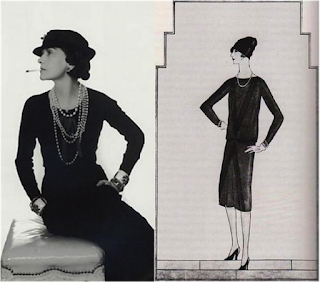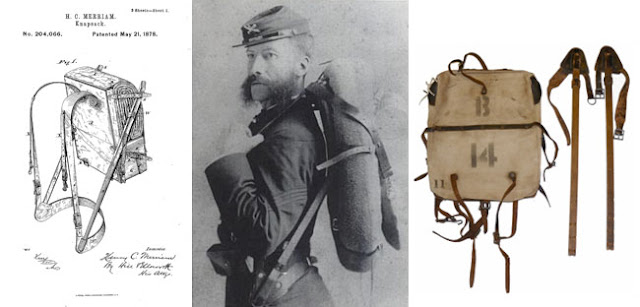SEW WHAT
BY: JESSICA SVENNINGSON
The MoMA’s exhibit
Items: Is Fashion Modern? profiled 111 fashion items from the 20th and 21st centuries believed to have had significant long term impact on the world. Showcasing clothing and accessories,
Items explored the
“many relationships between fashion and functionality, culture, aesthetics, politics, labor, identity, economy, and technology.”
If you missed the exhibit, MoMA has published a
catalogue available for purchase.
Items has inspired me to explore 11 fashion items whose histories I am unfamiliar with, and see their place in the world.
1. Denim Jeans
Jeans were created by fabric manufacturer Levi Strauss, who made the thick cotton denim, and tailor Jacob Davis. When Jacob designed and constructed the first pair of denim jeans by using copper rivets in places pants normally rip and tear (pockets and flies) Levi saw an opportunity for working class Americans. Levi and Jacob became partners and opened a factory in 1873. Jeans have held a strong place in western culture for over 140 years, first as a working class item, then an item of rebellion, and now a high fashion item.
Source
2. Zoot Suit
Zoot suits were popularized by African American jazz musicians in the 1940s, worn as a rebellious statement against the formality of fashion of the time. Unfortunately, materials and tailoring required to create zoot suits were so extravagant and costly that they were banned. Zoot suits were considered unpatriotic and their removal was intended to save raw materials as part of the 1940s war effort.
Source
3. Bowler Hat
Bowler hats were created in 1849 by Edward Coke, designed by Thomas and William, with the intention of creating a gentleman’s hat that could be worn by gamekeepers to protect their heads from low-hanging branches while out hunting. It became a part of the London businessmen’s uniform, now standing as a symbol of an upstanding conduct, a person of style, and semi-formal fashion.
Source
 |
| Coco Chanel, Little Black Dress Source |
4. Little Black Dress
The Little Black Dress, LBD, was designed by Coco Chanel in 1926. It made a big splash in American Vogue as a key dress piece of the 1920s, standing as a symbol of practical yet fashionable dress design for the modern woman. The LBD now holds a social position of “effortless elegance”, preventing the wearer from hiding behind any distractions and letting the woman shine through.
Source
5. High Heel
The high heel has a long history, dating back to the Persian Empire. Skilled horsemen attached a wooden peg to the heel of their shoes to better stabilize themselves so they could fight with both hands while riding. This was adapted by Europeans into several forms of heels, such as stacked leather heels for men, and
chopins for women in Italy during the Baroque period (a sign of wealth). The invention of the stiletto heel, supported by a steel rod in the core of the heel for weight support, changed the way shoe designers could create a heel. The removed risk of a heel cracking or bending from the weight of the walker meant heels could go as high as the wearer designered.
Heels have been worn by both men and women during the 20th century, mostly for fashion, but also as a tool for particular dance styles like Vogueing and Burlesque. Readers can learn more at the Bata Shoe Museum’s
Men in Heels exhibit.
6. Hand Fans
Archaeologists uncovered remnants of hand fans dating back to the 4th century BCE. The presence of fans have appeared in cultures all over the world such as Japan, Russia, Persia, ancient Greece, pre-revolutionary France, and most colonial countries. Their intended practical purpose as a means to stay cool and drive away insects has kept them alive through most of history, including today. Their near-constant presence in fashion has resulted in numerous designs and materials like ivory, bone, feathers, jewels, mica, parchment, paper, leather, silk, lace, and other forms of fabric. In the 17th century, fans were considered high status, similar to exotic gifts and elaborately decorated gloves. Although folding fans were popular in Europe and Japan, rigid non-foldable fans were more common in China.
Source
7. Silk and Nylon Stockings
The word “sock” has existed for almost as long as men have been wearing fabric on their feet. The word “stump” used to refer to the bottom part of a man’s leg and ankle, so the material covering that part of the body reflected the body part it was addressing. Before the 1920s, stockings were primarily used for warmth or protection from the elements; however, after women’s hemlines rose in the 1920s, stockings soon became a necessary part of a woman’s fashion wardrobe. Stockings were soon made of rayon and nylon, much like today. The technological invention of nylon revolutionized the status of stockings from one once very high to an ordinary object. Stockings were once very expensive, fragile, and difficult to replace when made of
silk. However, once stocking manufacturing used rayon and nylon, stockings became both cheap and more durable than silk, making stockings such an affordable fashion item that they fell from a luxury item to an every day object.
Source
8. Turban
Evidence of turban usage dates back to a sculpture from 2350 BCE in Mesopotamia. Turbans have been used throughout several histories around the world for religious, fashionable, and practical purposes, such as cleanliness, social position, religious orientation, method of protection from physical elements, or a sign of respect to others, just to name a few. Turbans are, at their core, draped unstitched cloth used as a head covering, making them one of the most versatile items of clothing for meaning making globally.
Source
9. Tutu
Before the French Revolution, ballet dancers wore clothing as a reflection of their contemporary audiences. This meant early ballet dancers wore long skirts referred to now as Romantic. As ballet dancers began to dance more on their toes, leading to ballet point, skirts began to rise to show off the leg work, eventually landing on the very stiff Classic tutu style commonly seen today.
Source
10. Backpacks
The creation of what we consider now to be a typical school backpack has only been in existence for approximately 46 years. Prior a school backpack, children would use a belt to strap their books. In the 1960s, school children might put school supplies in a cross body bag, called satchels, more commonly thought of now as shoulder bags. Canvas draw string or square leather bags with buckles could be found for carrying school supplies, but the first backpack with a zipper was created in 1938 by Gerry Outdoors for hikers and mountaineers. JanSport sold the first lightweight nylon backpack in 1967. When students at Washington University began using them to carry school supplies instead of hiking equipment the school communicated the change in use to JanSport who then tailored backpacks to the needs of students, creating what we now consider the modern day backpack.
Source
 |
| Gerry Outdoors Backpack Source |
11. Garter belts
Despite the garter belt’s long association with nudity and sexual desire, the intended use of garter belts was to keep one’s stockings up, and not down around the wearer’s ankles. Before the invention of nylon or spandex, stockings were held up with straps called garters. Garter belts, in all forms, were either part of corsets or belts, strapped under shirts and skirts, or tied around the legs, then clipped to the top of the stockings. The tension between the stockings and whatever the garter was secured to kept the stockings up and wrinkle free. Although the use of spandex now has removed the usefulness of garters, their long association with sexual appeal and undressing has kept them alive as a decorative piece in sex culture.
Source












No comments:
Post a Comment
Note: only a member of this blog may post a comment.